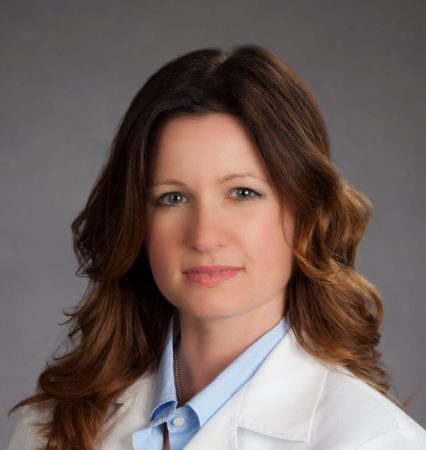Dr. Heather King is pioneering nipple-delay surgery in Texas and optimizing surgical and aesthetic outcomes for breast-cancer and high-risk patients.
By Chelsea Pribble

For Dr. Heather King, nipple-delay surgery is a no-brainer. Despite being a fellowship-trained breast surgeon at Texas Breast Specialists with additional training in oncoplastic surgeries, King first caught wind of the procedure when details of actress Angelina Jolie’s double mastectomy made headlines in 2013. With a piqued curiosity and desire to optimize surgical outcomes for her patients, King is pioneering nipple-delay surgery in the state of Texas. She is also among only a handful of surgeons nationwide utilizing the procedure. King sat down with Austin Woman to shed light on this life-altering procedure.
Delay surgery is an older plastic-surgery technique, yet it is often left off the table as an option for breast-cancer patients, despite being fairly simple and intuitive. For more commonplace nipple-sparing\ mastectomies, multiple incisions cut off the blood supply to the nipple. With nipple-delay surgery, several weeks prior to the mastectomy, the doctor makes one incision underneath the breast to increase blood flow to the nipple from the surrounding skin. The goal of the surgery is to allow patients with compromised blood flow caused by smoking, diabetes or even larger breasts to have a real chance to save their nipples.
“I want to do everything I can do to maximize my surgical outcomes because that’s my patient,” King says. “For nipple-delay surgery, I go in and lift up the skin and the nipple-areola complex away from the breast, use the same scars that I’m going to use at the time of the mastectomy and then just sew that down. Then I go back two to three weeks later and perform the mastectomy.”
According to King, nipple-delay surgery has a 100 percent success rate. Though it is an extra surgery, it answers oncologic questions that help breast-cancer and high-risk patients make vital, next-step decisions.
King also performs a biopsy while conducting the nipple-delay procedure to rule out any additional concerns.
“I usually do a biopsy behind the nipple as well, just in case,” she says. “I take that little tissue out, and I also tag where that area is. [Patients] go home the same day.”
King is adamant breast-cancer patients should know all their options, particularly when it comes to mastectomies and all they entail. As an innovator in nipple-delay surgery, she discusses the procedure with her medical partners regularly and even welcomes out-of-town colleagues who want to learn more.
“To me, it’s an evolution of breast-cancer care. I see a lot of women who aren’t even offered nipple-sparing mastectomies, even in Austin,” King says. “I think [nipple-delay surgery] should be used more widely, and I think if more people did it, they would realize the benefit.”


